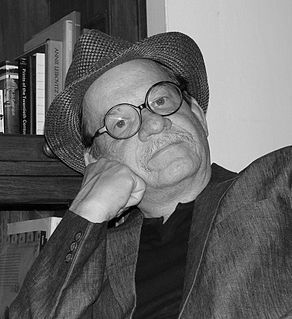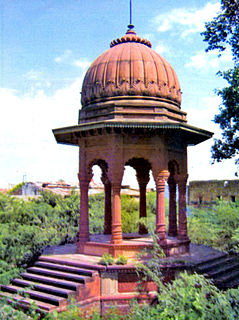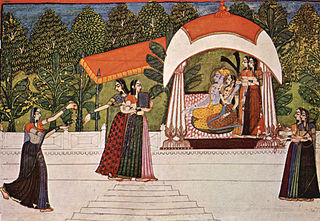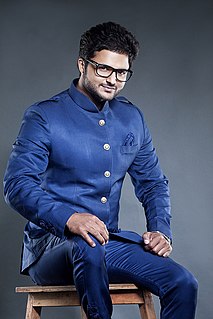| Rakesh Vijay | |
|---|---|
| Born | Rakesh Vijayvargiya 22 March 1970 Udaipur, India |
| Known for | painter |
Rakesh Vijay (22 March 1970), professionally known as R. Vijay, is a Rajasthani miniaturist best known for his collaborative work with American artist Waswo X. Waswo. R. Vijay received little formal training and his miniature painting style has been described as naïve, though his works have drawn attention and praise from various critics throughout India. [1]

Rajasthan is a state in northern India. The state covers an area of 342,239 square kilometres (132,139 sq mi) or 10.4 percent of the total geographical area of India. It is the largest Indian state by area and the seventh largest by population. Rajasthan is located on the northwestern side of India, where it comprises most of the wide and inhospitable Thar Desert and shares a border with the Pakistani provinces of Punjab to the northwest and Sindh to the west, along the Sutlej-Indus river valley. Elsewhere it is bordered by five other Indian states: Punjab to the north; Haryana and Uttar Pradesh to the northeast; Madhya Pradesh to the southeast; and Gujarat to the southwest.
Early in life Rakesh was tutored by traditional miniaturists such as Sukhdev Singh Sisodiya and Laxmi Narayan Sikaligar. Later he developed his own style, which has been called an eclectic mix of Persian and Mogul styles, along with a bit of the Company School of Indo-British art. [2] The artist also takes inspiration from his great-uncle Ram Gopal Vijayvargia, [3] a well-known Rajasthani miniaturist who had practiced his art in Jaipur, and became widely acclaimed in India not only for his paintings but also for his many short stories published in Hindi.
In 2004 R.Vijay began doing collaborative work with the American Waswo X. Waswo. Taking concepts suggested by Waswo, Vijay creates a series of miniatures that depict a foreigner’s life in India, complete with a wide variety of emotions and predicaments. In this collaborative work the two artists pull together an extremely disparate collection of cultural references, from both the East and the West. [4] The two artists take joint credit for this body of work, with R. Vijay signing each painting and Waswo embossing his initials. This work has been exhibited along with the collaborations Waswo has done with photographic hand-colorist Rajesh Soni under the exhibition title "A Studio in Rajasthan". [5]

Waswo X. Waswo, is a photographer and writer most commonly associated with his chemical process sepia-toned photographs of India, and also hand-colored portraits made at his studio in Udaipur, Rajasthan. Waswo’s first major book, India Poems: The Photographs, was in part a challenge to politically correct notions of the western artist's role in responding to Asia, and his work has been critiqued in the light of cultural theories that stem from Edward Said and his book Orientalism.
Rajesh Soni is an artist living in Udaipur, Rajasthan, who has become known primarily for his abilities to hand paint digital photographs. He is the son of artist Lalit Soni, and the grandson of Prabhu Lal Soni, who was once court photographer to the Maharana Sir Bhopal Singh of Mewar. Prabhu Lal Soni was not only a court photographer, but also a hand-colorist who painted the black-and-white photographs that he produced. The skills of hand-coloring photographs were passed down to Rajesh through the intermediary of his father Lalit.







